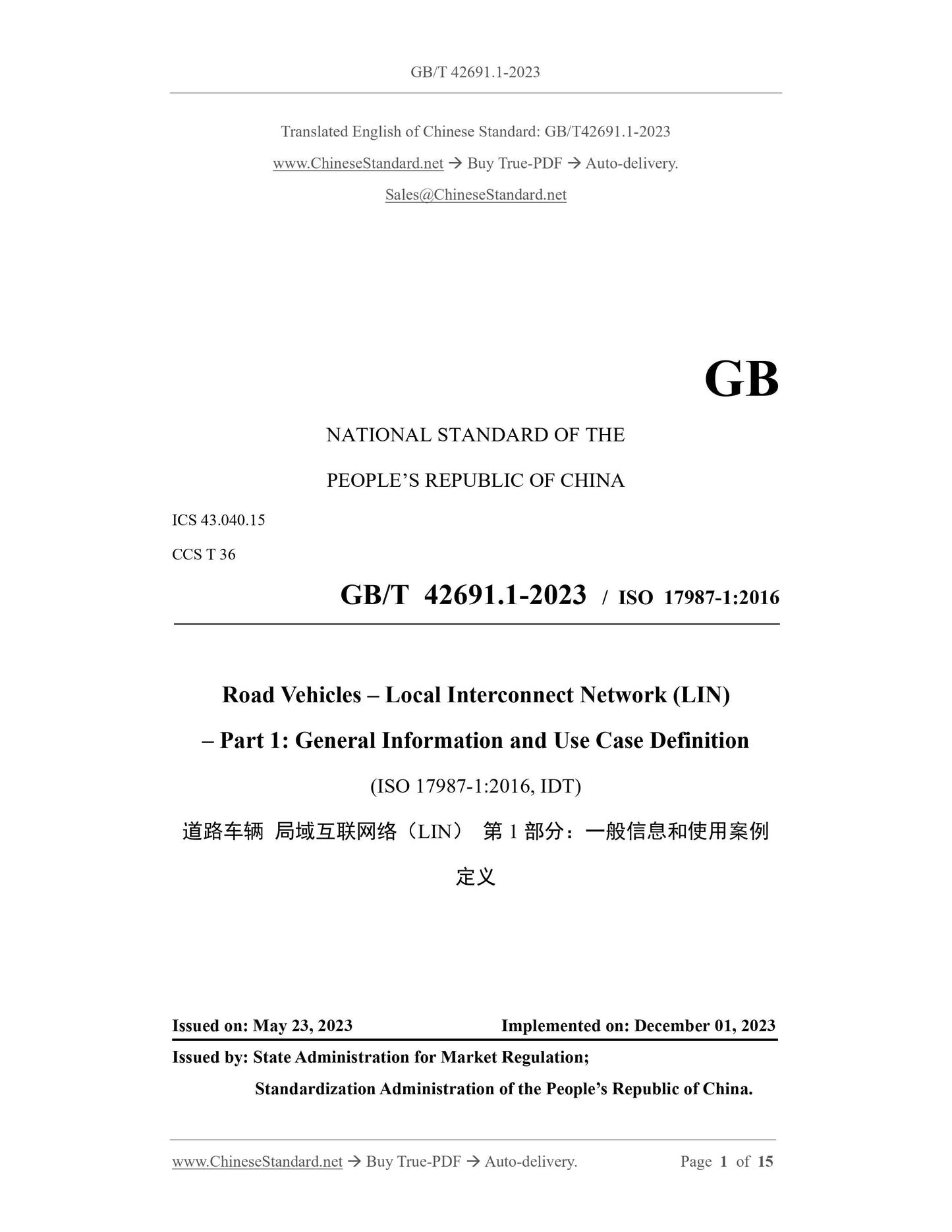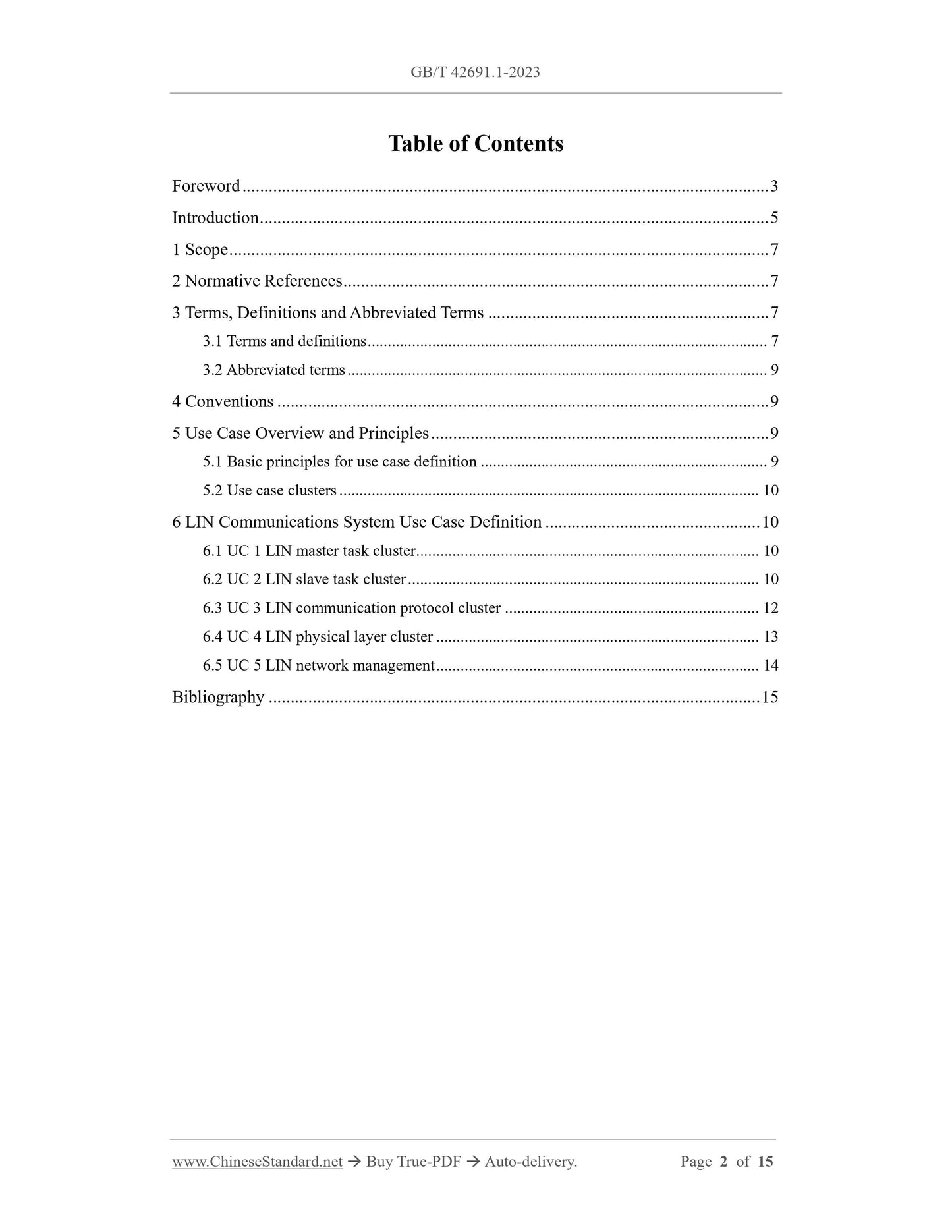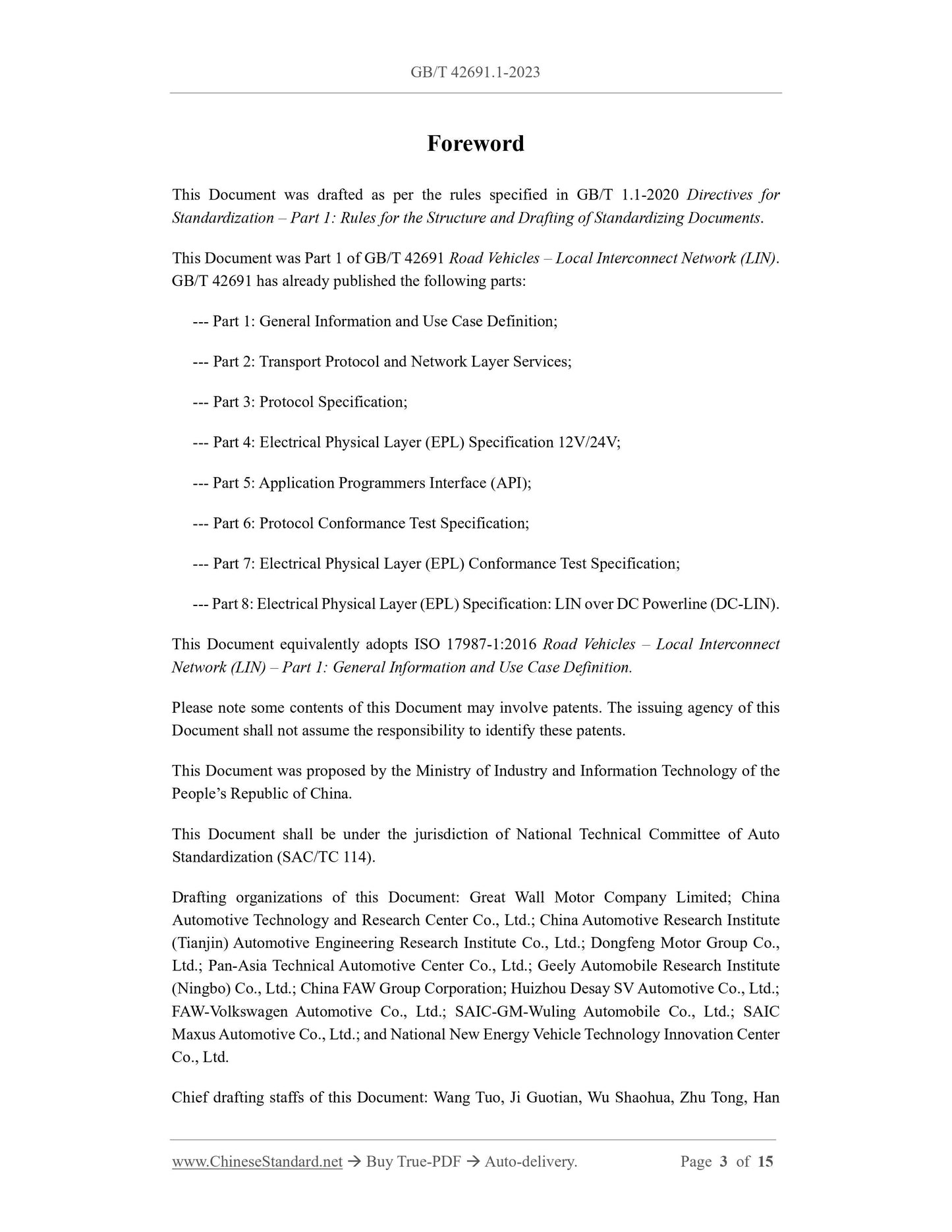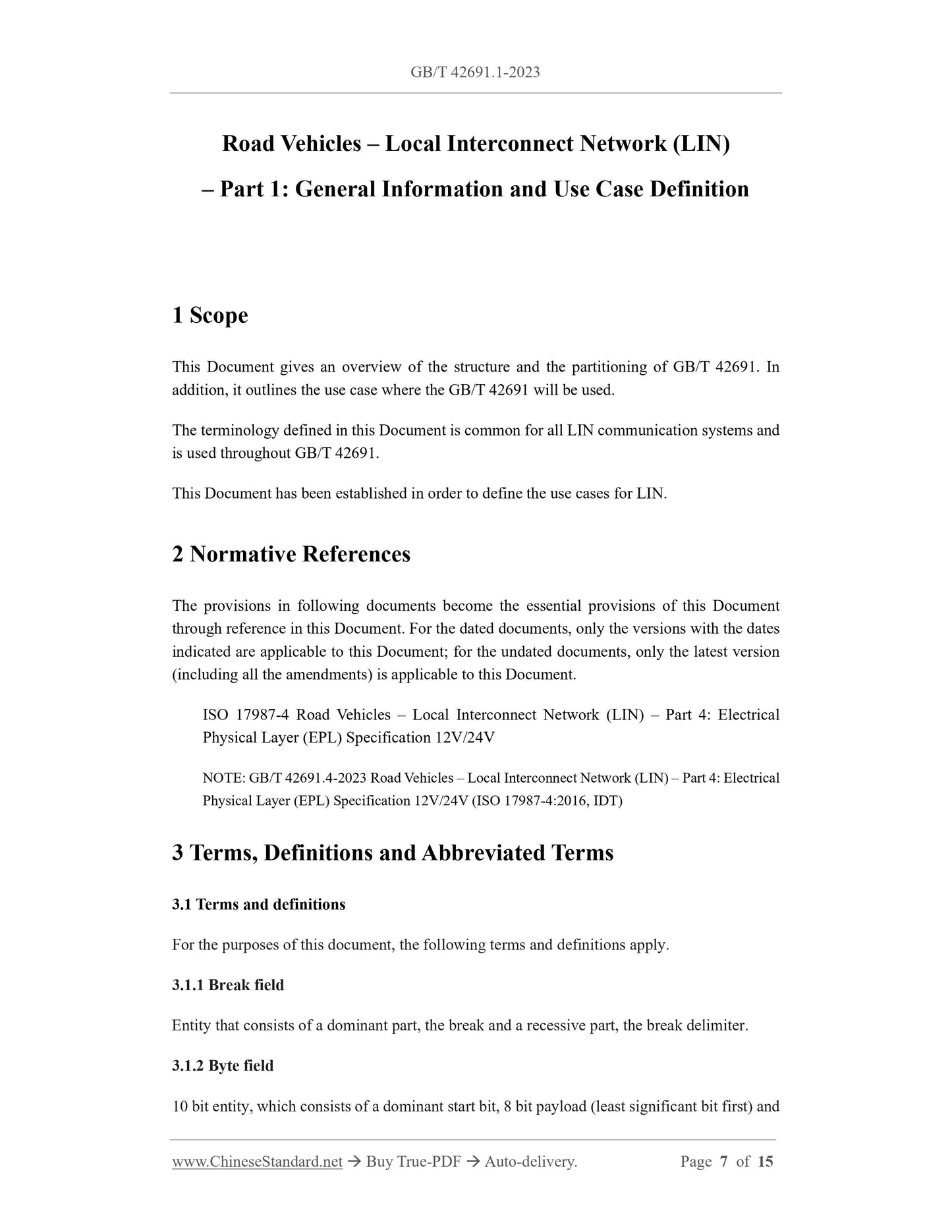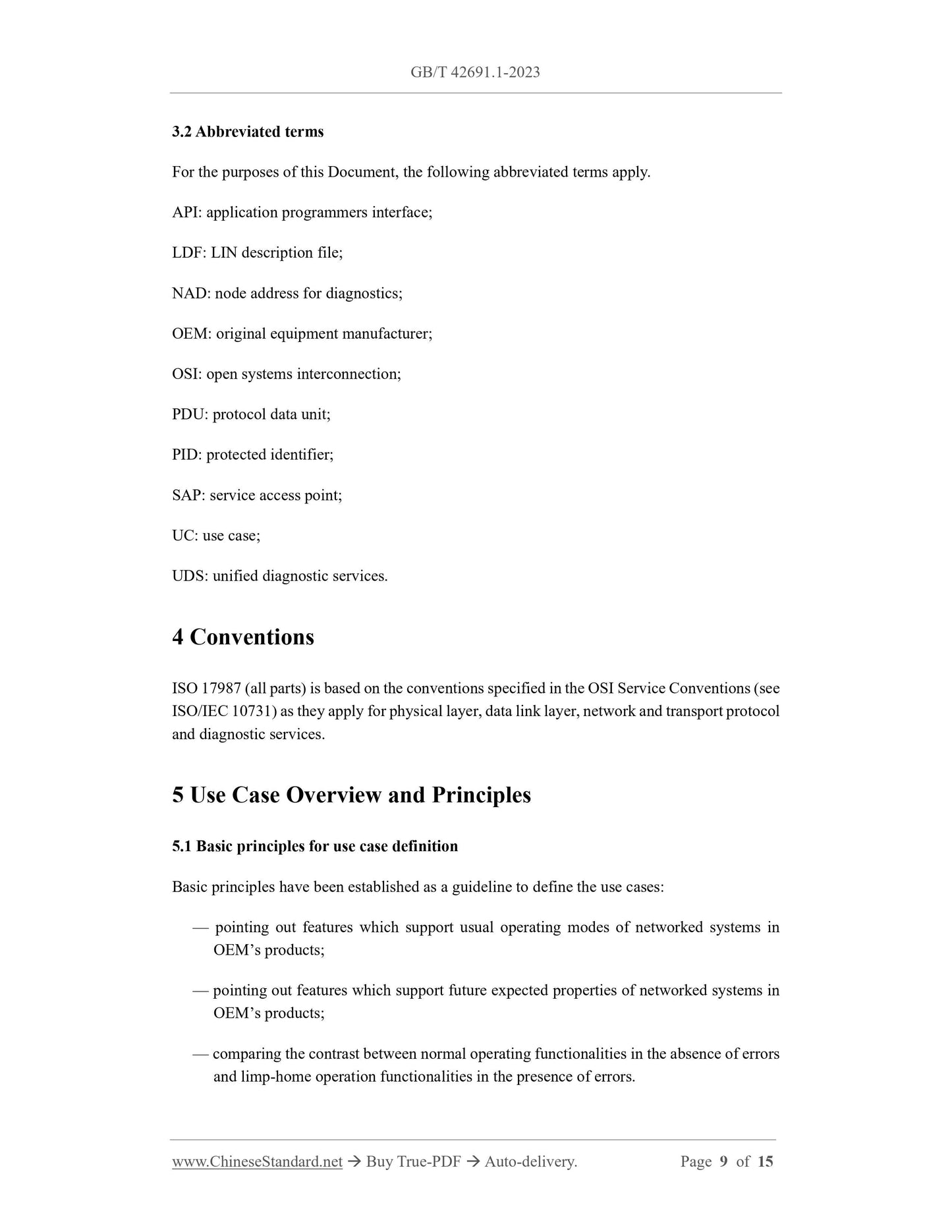1
/
of
5
www.ChineseStandard.us -- Field Test Asia Pte. Ltd.
GB/T 42691.1-2023 English PDF (GB/T42691.1-2023)
GB/T 42691.1-2023 English PDF (GB/T42691.1-2023)
Regular price
$245.00
Regular price
Sale price
$245.00
Unit price
/
per
Shipping calculated at checkout.
Couldn't load pickup availability
GB/T 42691.1-2023: Road vehicles - Local Interconnect Network(LIN) - Part 1: General information and use case definition
Delivery: 9 seconds. Download (and Email) true-PDF + Invoice.Get Quotation: Click GB/T 42691.1-2023 (Self-service in 1-minute)
Newer / historical versions: GB/T 42691.1-2023
Preview True-PDF
Scope
This Document gives an overview of the structure and the partitioning of GB/T 42691. Inaddition, it outlines the use case where the GB/T 42691 will be used.
The terminology defined in this Document is common for all LIN communication systems and
is used throughout GB/T 42691.
This Document has been established in order to define the use cases for LIN.
Basic Data
| Standard ID | GB/T 42691.1-2023 (GB/T42691.1-2023) |
| Description (Translated English) | Road vehicles - Local Interconnect Network(LIN) - Part 1: General information and use case definition |
| Sector / Industry | National Standard (Recommended) |
| Classification of Chinese Standard | T36 |
| Classification of International Standard | 43.040.15 |
| Word Count Estimation | 15,131 |
| Date of Issue | 2023-05-23 |
| Date of Implementation | 2023-12-01 |
| Issuing agency(ies) | State Administration for Market Regulation, China National Standardization Administration |
Share
